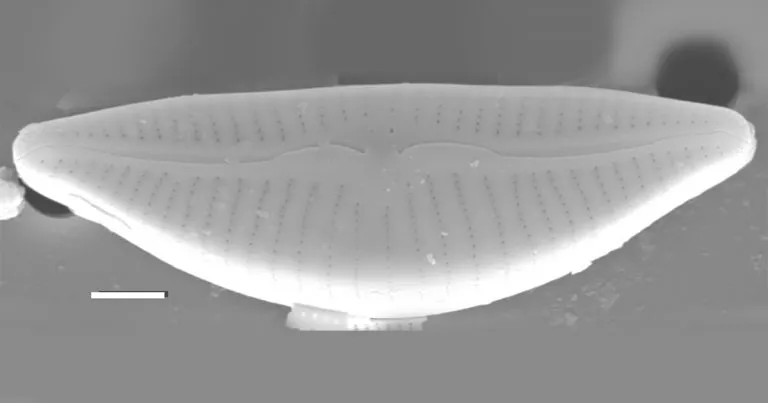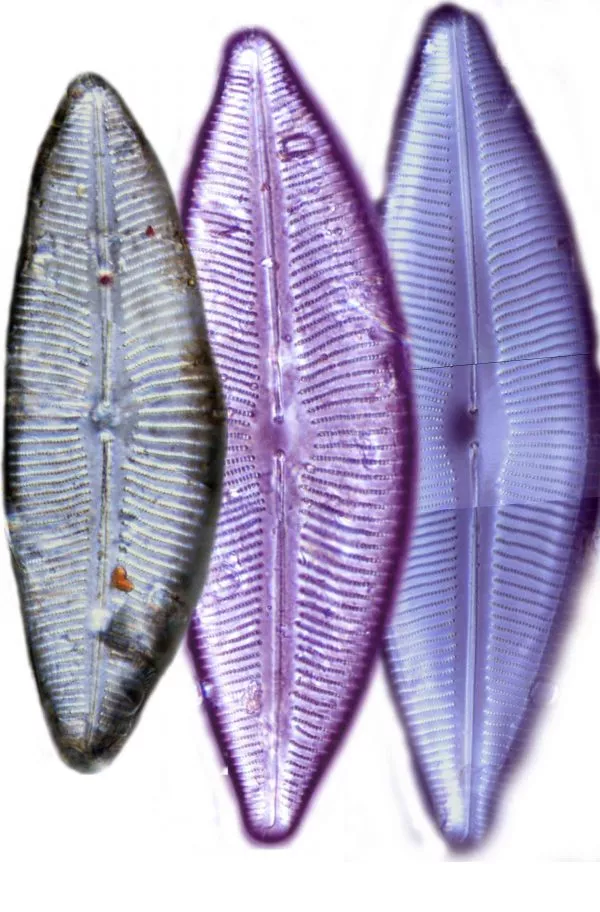We rarely think about the effect that human activity can also have on distant habitats, though there is an increasing amount of irrefutable proof that this is the case. Recently, an international research team also uncovered a relevant and impactful example, which led to a report being published in the Plos One international journal in October 2020. During analysis of a core sample taken from Ighiel Lake, Krisztina Buczkó, who was conducting tests on diatoms (a form of algae) – the primary author on the shared article and the head of department of the Danube Research Institute of the ELKH Centre for Ecological Research – identified drastic changes. In order to interpret the results, it was also necessary to obtain measurements from Romanian, Czech and English researchers, while in Hungary, ELTE and the National University of Public Service were also involved in the work. The ELKH Centre for Ecological Research – recognizing the importance of data linked to long-term time series – has taken an increasingly significant role in paleolimnological testing.
Ighiel Lake is the largest karst lake in Romania. It is located 940 meters above sea level in the southern section of the Trascău Mountains. The lake, which is broadly oval in shape, developed as a result of natural soil subsidence and has an average depth of four meters. In 2012, four short (less than one meter) and one long (six-meter) core samples were taken from the lake. Of the four short core samples, the last, an SC4-signal core, was subjected to a high-resolution, detailed examination by the research group. The experts measured and estimated several different parameters, including sediment organic matter content, chemical elements, sediment magnetic properties (magnetic susceptibility), and silica-based organisms (microfossils). The age of the sediment was determined by lead and cesium isotope measurements, according to which the SC4 one-meter core contains approximately 100 years of history.
In order to identify causal correlations with the changes found in the sediment, the potential effects of several parameters were investigated by the researchers, including meteorological data (temperature, precipitation). Historical maps were used to estimate forest cover and look for data on animal husbandry developments, including fishing. The effect of large atmospheric systems was also considered, and the effect of each factor was then quantified by multivariate mathematical analyzes.
At the beginning of the study period (1920–1964), the diatoms in the lake mainly reflected hydrological changes. The environmental reconstruction shows a clear agreement with the measured meteorological parameters: it was demonstrated that drier and wetter years alternated with each other. Traces of leaching from the lake shore could also be observed, and the diatom community indicates roughly clear water (oligo-mesotrophic state) and stable conditions despite relatively high erosion. The washouts indicate higher rainfall, based on which 1930, 1945 and 1953, for example, were rainy years.
In the early 1970s, this rhythm altered: there was a change in both the species composition and the community structure. The sediment itself shows a different picture: the previously finely layered material becomes homogeneous. The diatoms show us that an increasing number of planktonic forms are living in open water, i.e. eutrophication has begun. This shift coincided in time with declining forest cover and fish stocking.
From the late 1980s, the composition of diatoms preserved in sediment became completely different: open-water, planktonic diatoms dominated the lake water (80-90% of their relative frequency) and Asterionella formosa was becoming the dominant species. In the 2000s, another, very rapid and drastic transformation can be observed: this is when small, round, radially symmetrical species began to take over.
Pieces of research that report changes tend to be the most newsworthy. Unfortunately, the current data are consistent with similar analyzes conducted in other lakes in the region. Indeed, drastic changes have also been observed in the surface waters of the northern hemisphere: a complete transformation of microscopic wildlife has taken place in a significant number of lakes in just a few decades. Changes in land use and local effects can also have a significant effect, but if different lakes provide such a similar response over a longer period time, then “global” causes must be sought. In the case of Lake Ighiel, the effects of large atmospheric cycles such as AMO (North Atlantic Multidecadal Oscillation) may also prove to be significant. However, according to the analysis and international comparisons, it is nitrogen that precipitates from the atmosphere which fundamentally transforms the aquatic world, indicating that atmospheric pollution, transport and fertilizer use are most responsible for these changes.
In summary, the so-called multi-proxy analysis of sediment nuclei highlighted from Lake Ighiel provides evidence for changes in land use (deforestation, grazing, construction), but also shows the role of atmospheric cycles (NAO) in lake processes. During the analysis of the sediment, the most drastic change was in the composition of the diatom community: beginning in the 1980s, this community was completely transformed in two stages, and substances containing nitrogen that were deposited from the atmosphere may have played a decisive role in the process. We are now facing the consequences of increasing fertilizer use on mountain lake wildlife.
The research is related to one of the new research directions of the ÖK Danube Research Institute, the aim of which is to study the lakes of the Carpathian Basin in the longer term.

Figure 1: Scanning electron microscopy of diatoms of the genus Cymbella

Figure 2: Diatoms with round, tiny radial symmetry can usually only be determined with a scanning electron microscope because of their minuscule size.

Figure 3: Before the 1960s, many large diatoms were deposited in the sediment. The picture shows three specimens of the diatom of Cymbopleura inaequalis on a light microscope
Article details:
Haliuc, A.; Buczkó, K.; Hutchinson, S.M.; Ács, É.; Magyari, E. K.; Korponai, J.; Begy, R. C.; Vasilache, D.; Zak, M. and Veres, D., 2020. Climate and land-use as the main drivers of recent environmental change in a mid-altitude mountain lake, Romanian Carpathians. PloS one, 15(10), p.e0239209.
Available online:
https://journals.plos.org/plosone/article/comments?id=10.1371/journal.pone.0239209